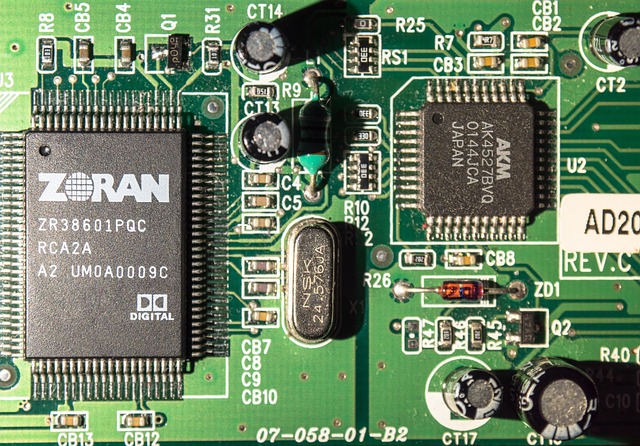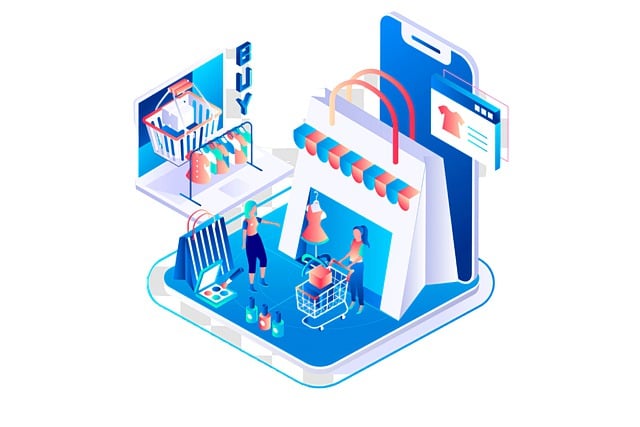Ecommerce AI chatbots are powerful tools that leverage NLP for real-time interactions, offering personalized product recommendations, answering queries, and handling basic transactions. Trained on vast datasets from customer interactions and industry knowledge, these chatbots use machine learning to continually improve. Core capabilities include NLP for understanding user inputs and dialogue flows for context-aware responses. Strategically integrated, they enhance engagement, streamline support, and boost sales through 24/7 assistance and personalized experiences. Continuous refinement based on metrics like satisfaction ratings, accuracy, and resolution times ensures their effectiveness and drives business success.
An eCommerce AI chatbot is a game-changer, enhancing customer experience and driving sales. This comprehensive guide unravels the mechanics of these intelligent assistants. We’ll explore fundamental concepts, from understanding basic chatbot architecture to advanced data collection and training methods. Delve into the intricacies of Natural Language Processing (NLP) and Dialogue Flow for seamless interactions. Learn how to integrate chatbots into your platform and measure their performance for continuous improvement. Unlock the potential of eCommerce AI chatbots today!
- Understanding Ecommerce AI Chatbot Basics
- Data Collection and Training Methods
- Natural Language Processing (NLP) and Dialogue Flow
- Integrating the Chatbot into Your Ecommerce Platform
- Measuring Performance and Continuous Improvement
Understanding Ecommerce AI Chatbot Basics

Ecommerce AI chatbots have become essential tools for enhancing customer experience and driving sales. At their core, these chatbots leverage natural language processing (NLP) to understand and respond to customer queries in real-time. By integrating with ecommerce platforms, they can provide personalized product recommendations, answer frequent questions, and even facilitate basic transactions without human intervention.
The basics of an ecommerce AI chatbot involve several key components. These include a sophisticated algorithm that processes user inputs, a database containing vast amounts of product information, and machine learning capabilities that enable continuous improvement based on interaction data. Through these mechanisms, chatbots can learn to anticipate customer needs, offer tailored solutions, and ultimately increase conversion rates while reducing the workload on human support staff.
Data Collection and Training Methods

The first step in understanding how e-commerce AI chatbots work is recognizing the importance of data collection and training methods. These chatbots are trained on vast datasets, which include customer interactions, product descriptions, FAQs, and even industry-specific knowledge. Data collection involves scraping text from various sources like website content, social media posts, and online forums to capture a diverse range of language patterns and user queries. This data is then preprocessed to remove noise, correct errors, and format it in a way that’s suitable for machine learning algorithms.
Training methods vary but often involve supervised learning techniques where the AI model learns from labeled examples. In the context of an e-commerce chatbot, this means feeding it conversations between customers and agents, or even just customer queries and their associated responses. The model adjusts its parameters to minimize errors in predicting the next most likely response. Over time, through iterative training and fine-tuning, these chatbots can understand a wide range of user inputs and generate contextually relevant outputs, enhancing their ability to assist shoppers effectively.
Natural Language Processing (NLP) and Dialogue Flow

Natural Language Processing (NLP) forms the backbone of any robust AI chatbot, including those powering the ecommerce industry. NLP enables machines to understand and interpret human language, allowing them to process user queries and generate relevant responses. By analyzing text and contextual cues, these algorithms can grasp the intent behind a customer’s message, whether it’s a simple question or a complex inquiry involving multiple product details. This understanding facilitates more natural and effective communication between customers and chatbots.
Dialogue flow, another critical aspect, refers to the logical structure of conversations that an ecommerce AI chatbot navigates. It defines the possible paths a conversation can take based on user inputs. Well-designed dialogue flows ensure that chatbots provide accurate responses while adhering to predefined rules and maintaining context across different interaction points. This seamless back-and-forth enhances customer satisfaction by offering swift and consistent assistance throughout their purchasing journey, from product searches to post-purchase follow-ups.
Integrating the Chatbot into Your Ecommerce Platform

Integrating an AI chatbot into your ecommerce platform is a strategic move that enhances customer engagement and streamlines support. These intelligent assistants can be seamlessly embedded within popular shopping sites, offering instant assistance to online shoppers. By simply providing a chat interface, customers can interact with the chatbot in real-time, asking questions about products, placing orders, or seeking help with returns and exchanges. This level of accessibility improves customer satisfaction and boosts sales conversion rates.
Ecommerce AI chatbots are designed to learn and adapt from user interactions, constantly evolving their responses based on feedback. They can offer personalized product recommendations, answer frequently asked questions (FAQs), and even process basic transactions, thereby reducing the workload on human customer service representatives. This integration allows businesses to provide 24/7 support, ensuring that shoppers receive timely assistance regardless of their location or time zone.
Measuring Performance and Continuous Improvement

Measuring performance is a crucial aspect of an ecommerce AI chatbot’s lifecycle, as it allows for continuous improvement and refinement. Key metrics to track include user satisfaction ratings, response accuracy, and the time taken to resolve customer inquiries. By analyzing these data points, developers can identify areas where the chatbot excels and aspects that require enhancement. For instance, high user satisfaction coupled with accurate responses but longer resolution times might indicate a need for more efficient information retrieval processes or additional training on common queries.
Continuous improvement involves regular updates and fine-tuning based on performance metrics and customer feedback. This iterative process ensures that the ecommerce AI chatbot remains relevant, effective, and aligned with evolving customer needs. Incorporating new features, expanding knowledge bases, and refining conversational flows are all part of this ongoing evolution, ultimately enhancing the overall customer experience and driving business success.
Ecommerce AI chatbots are transforming the way businesses interact with their customers. By understanding the fundamentals, collecting and training data effectively, leveraging NLP for natural conversations, seamless integration onto platforms, and continually measuring performance, these chatbots can significantly enhance customer service, drive sales, and provide valuable insights. Implementing an ecommerce ai chatbot is no longer a consideration—it’s a necessity in today’s digital landscape.
